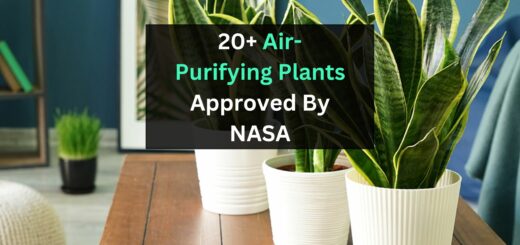What is Hoya Australis? – How to Grow and Care for Hoya Australis?
Hey folks! Welcome back!
I hope you are doing great in your gardening field. Do you know about the Hoya Australis? Hoya australis belongs to the Oleander family and can grow quite large if left unpruned.
Some other common names include porcelain flower, wax vine, and honey plant. You’ll find waxy blooms that grow in late winter and persist through the summer. The smell may be too strong.
Key takeaways:
- Hoya australis is a fast-growing climber.
- Hoya australis has long been popular in its native Australia, and the plant’s reputation is spreading around the world.
- This is a friendly hoya with many excellent strains to choose from
In this article, you will come to know everything you need to know about caring for Aussie Hoya, and how to address and prevent common problems.
Let’s get started to know more about the Hoya Australis in detail.
What is Hoya Australis?
Hoya australis is a fast-growing climber with shoots up to 3 m. It’s a low-maintenance plant, and its air-purifying properties make it a classic houseplant. Hoya australis belongs to the light-loving side of the Hoya spectrum. You can enjoy the soft morning light for hours. In northern regions, plants can benefit from more direct sunlight.
Hoya Australis is a semi-succulent plant also known as the wax vine, honey plant, and porcelain flower. Hoya Australis is the perfect addition to your home as it looks stunning without much effort.
It may require some neglect and is even known to have air-purifying properties. If you’re just getting into the houseplant game or even a seasoned gardener, then Hoya Australis is for you.
What are the caring tips for Hoya Australis?
Do you want to know about the caring tips that can be used for Hoya Australis? If yes, then you are at the appropriate place to know about their care tips. Below are the points that will reflect their importance:
Size and Growth
- Although there are some differences between subspecies, the wax tree is a climber and usually reaches 13 to 33 feet tall.
- Its glossy green leaves, consistent with the common name, are both succulent and oval.
- The leaves vary between dark green and yellow-green depending on the incidence of light.
Diseases and pests
- They can be infested by aphids, scales, spider mites, thrips, and mealybugs, but if treated early, they will tolerate minor infestations without causing undue damage.
- When overwatered, it is less susceptible to other diseases besides root rot and fungus.
Temperature
- Hoya australis does well in summer and spring with indoor temperatures of 18-24 degrees Celsius (65-75 degrees Fahrenheit).
- Always avoid drafts and extreme temperatures as this can disturb the plant and stunt growth.
- This plant likes to be kept warm; therefore, the minimum room temperature should always be above 16 degrees Celsius.
Flowering and Fragant
- Honey plants have this particular nickname because Hoya is a species with fragrant flowers.
- The star-shaped flowers of this species are creamy-white with a burgundy center and produce a large amount of dripping nectar.
- These flowers are 5/8 to 1 inch in diameter and are clustered on ⅜ to 1-inch long stems.
- Flowering occurs in summer and may be affected by recent pruning or low light levels.
Humidity
- While Hoya Australis grows naturally in subtropical or tropical climates, it is now grown as a houseplant in a variety of climates.
- Therefore, mimicking the natural environment is important for the healthy growth of plants.
- Hoya Australias likes high humidity.
- However, it can also withstand low humidity levels of 40-60% without damage.
Sunlight needs
- Sunlight is needed by every plant, and the same is the case with Hoya Australias Lisa.
- You have to provide it with bright indirect sunlight.
- If the plant receives more sunlight, then the leaves will be scorched.
- They can even survive in moderate sunlight conditions.
Watering needs
- You have to provide this plant with water when the top layer of soil becomes fully dry.
- You have to follow the rule of thumb by checking the moisture of the soil.
- You have to put the finger inside the soil about 2 inches deep and if it feels dry then is the right time to water your plant.
- This plant requires water to drink about once a time in a week.
- Give a gap between waterings.
Soil needs
- This variety requires well-drained soil for its good growth.
- Do not feed this with more water as the soil will become waterlogged.
- So you have to add perlite to the soil mix which will help in retaining the excess water from the soil.
- The pot should have a good amount of drainage holes.
These are the factors or you can say caring tips that are important for the Hoya Australis. Read it carefully to understand it properly.
Some common problems with Hoya Australias Lisa
various problems are faced by the plant and the same is the case with the begonias.
It becomes challenging for Gardner to prevent those problems, but first, you need to know about those common problems with the begonias:
Brown-colored leaf tips
One of the problems with the Hoya Australias Lisa is the brown color leaf tips in the plant. It is because of the excess supply of sunlight to the plant which makes them dull. Also, less supply of watering can be the cause behind this issue.
Spots on the leaves
Sometimes there are holes or spots on the leaves that disturb the look of the plant in the garden.
As you know, there are various best that like this plant, so they come near the plant so that they can take the fluid from the plant to satisfy their hunger.
So you must remove those logs or pests from the plant by hand if possible. Otherwise, you can make use of the homemade solution to prevent it.
Yellow coloured leaves
Oh! Another main problem faced by this plant is the turning of leaves into yellow color, which shows the exact sign of overwatering. So you have to keep in mind, not to water the plant.
feed them with water when the soil becomes dry and that can be checked by inserting a finger in the soil and effect. It feels dry about an inch then is the right time to water your plant.
What is the origin of the plant?
The Hoya Australis plant takes its title from its origins in the rainforests of Eastern Asia and northern Australia. Hoya Australis is generally found on the rocky, outside margins of woodlands rather than growing beneath the treetops.
The Australis was initially called the late eighteenth century on Australia’s northeastern coasts, and it’s been the largest widely grown Hoya in the country today. It’s traditionally cultivated in a variety of temperatures and circumstances across the world.
Few Productive Hoya Australis Hints and Tips
- Put them into excellent light to enhance blossoming.
- Flowering will also be aided by a magnesium natural fertilizer.
- The Hoya australis will enjoy misting the leaves.
- In the winter, high moisture content can lead to fungus. Keep this in mind.
- Whenever the vine is blooming, avoid spraying because the humidity will keep pests away.
- For 2 months, do not feed the newly flower.
How to grow Hoya Australis?
Now, we will come to know how to propagate these Hoya Australis. Hoya propagation is simple in general, and stem cuttings in soil are the most effective method (though you can also do stem cuttings in water).
Choose a healthy stem with at least two nodes and propagate throughout the summertime for the greatest results.
For more such plant related-articles, you may also read, How to fix overwatered Peace Lily?- Symptoms and Advice
How to propagate this plant in the Soil?
- Firstly, you have to Mix perlite in 3 parts.
- Then, 1 part pine or coconut shell.
- Put the slicing end into root hormones.
- In the planting mix, insert the clipping.
- To maintain moisture, cover the pot and cut it with a plastic cover.
- Maintain conditions of at least 70 degrees Fahrenheit.
- It takes about a month for seeds to grow back.
This is how you are easily done with the process of propagating and developing this plant.
Wrapping up the context
In this article, you come to know about the Hoya Australis. This plant belongs to the light-loving side of the Hoya spectrum. You can enjoy the soft morning light for hours. In northern regions, plants can benefit from more direct sunlight. I hope this article will be useful for you all.
Thanks for reading! Happy Gardening!


